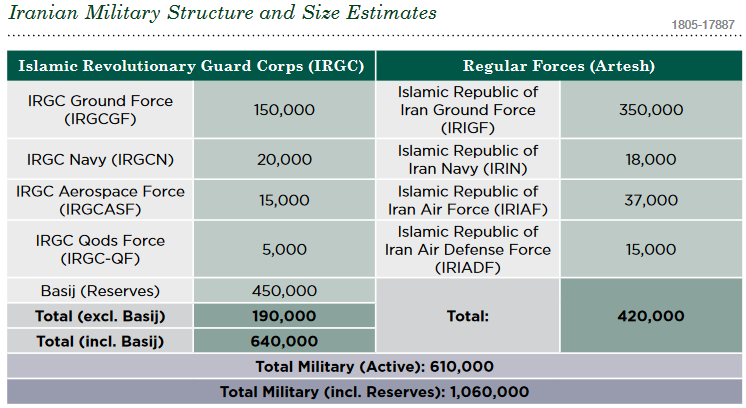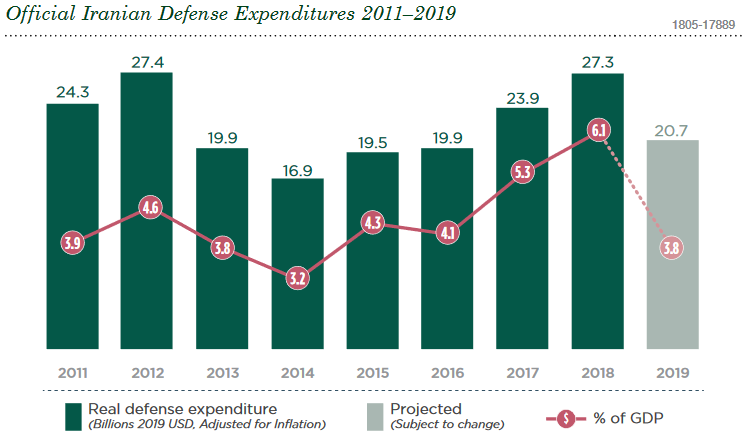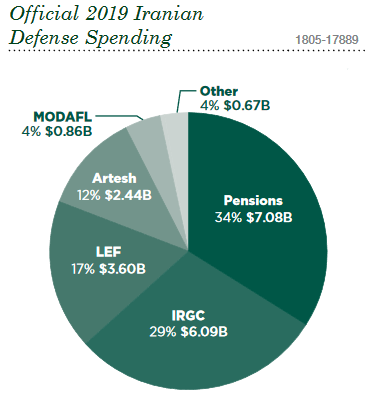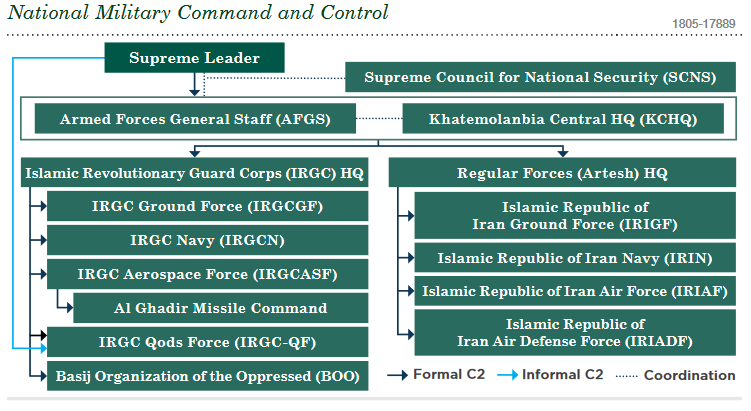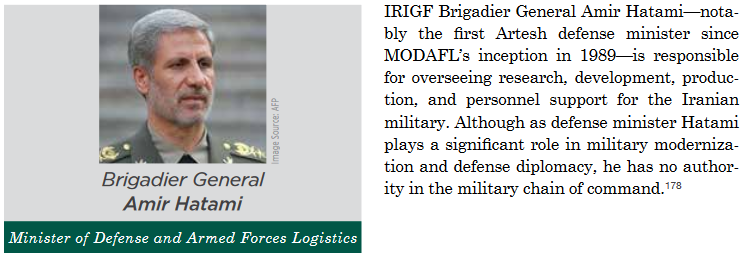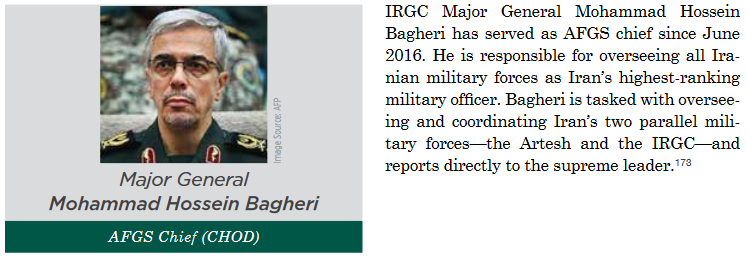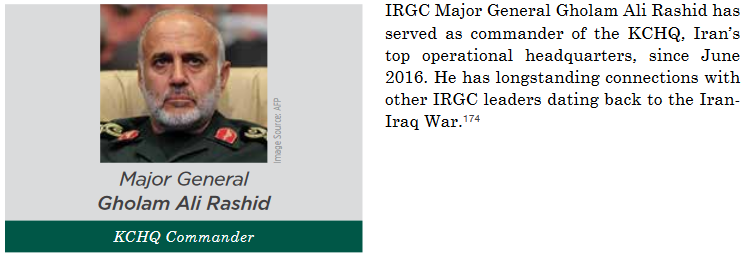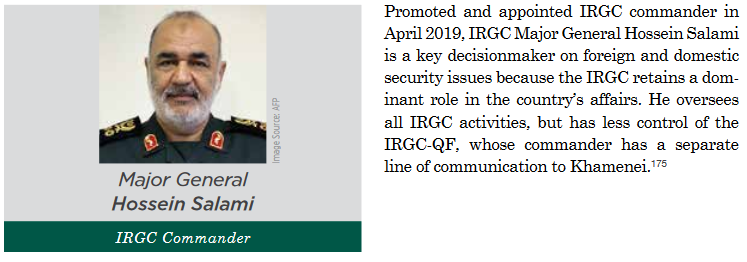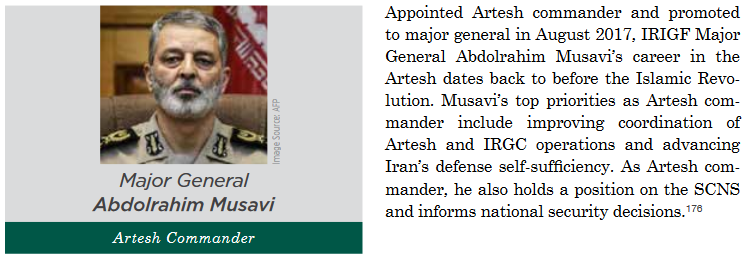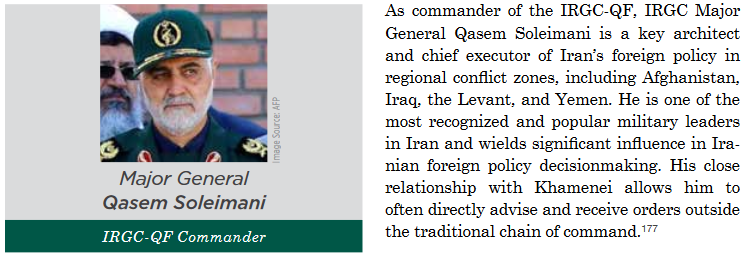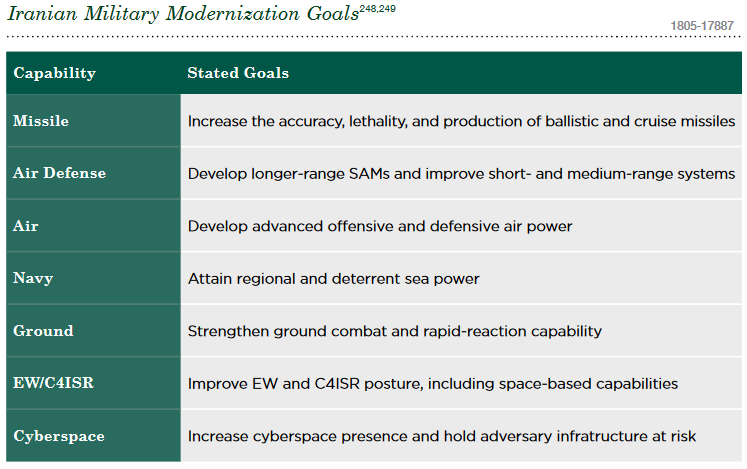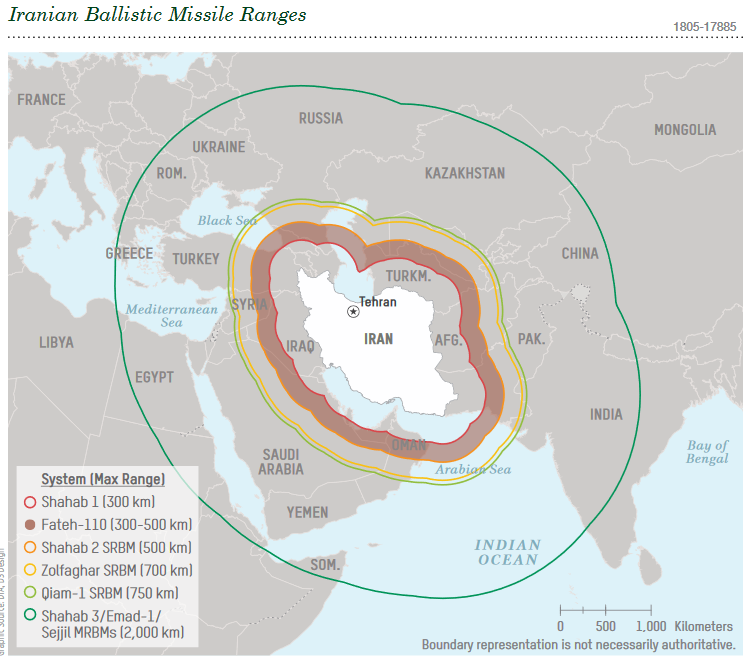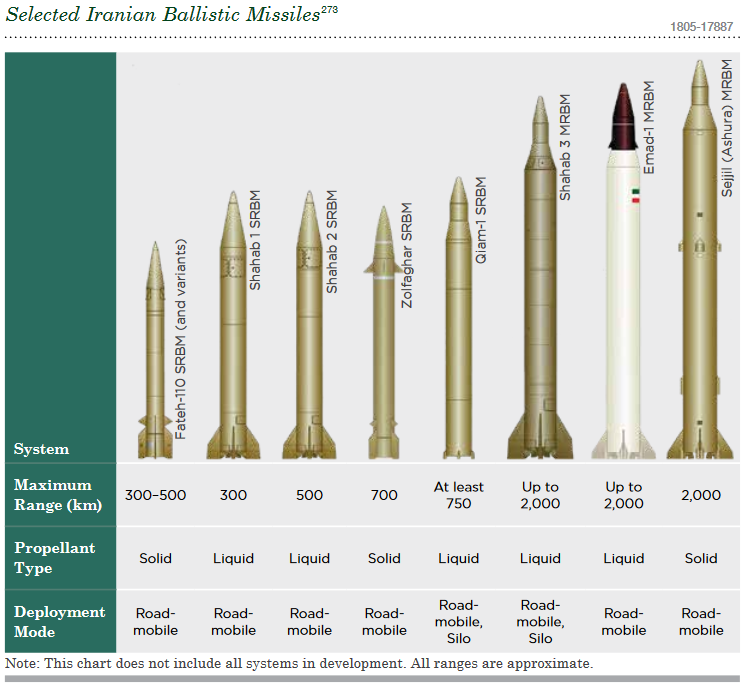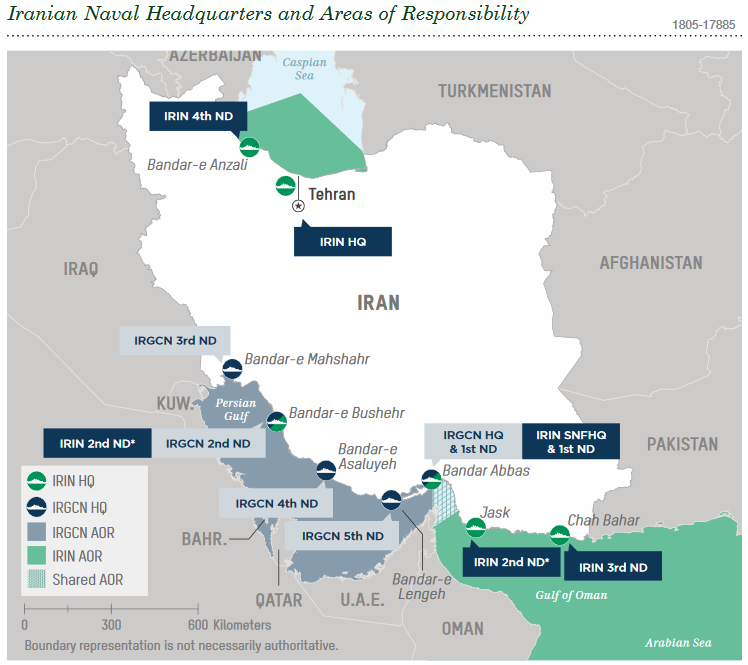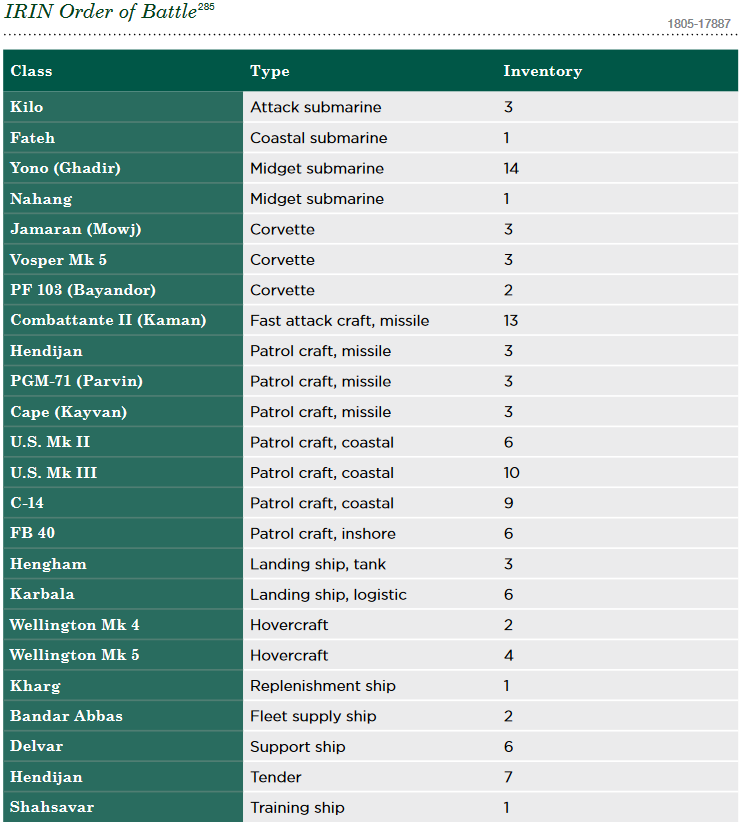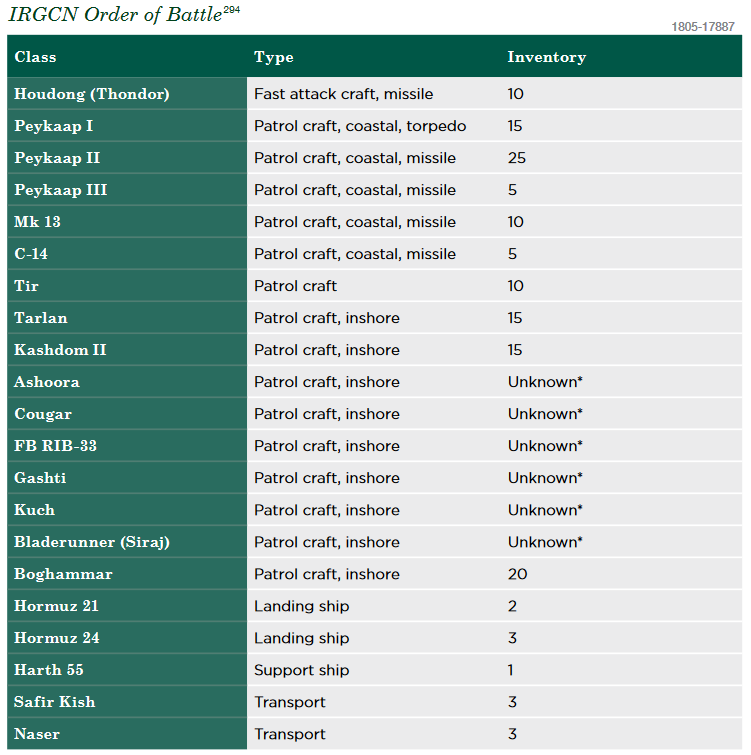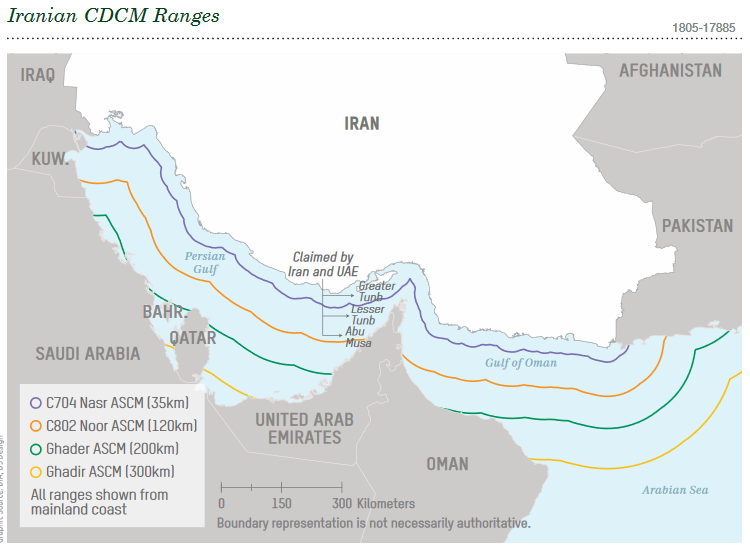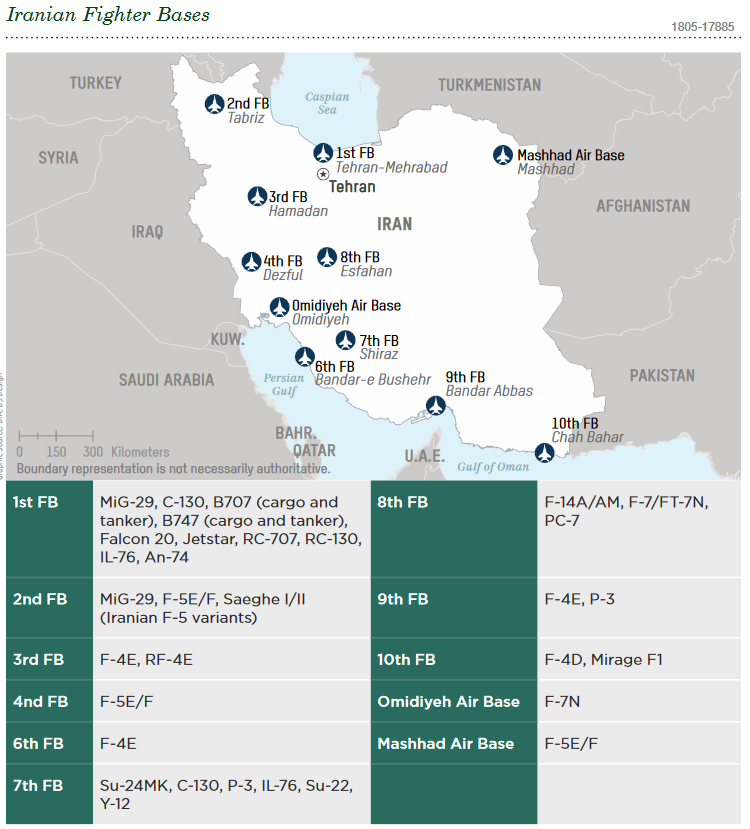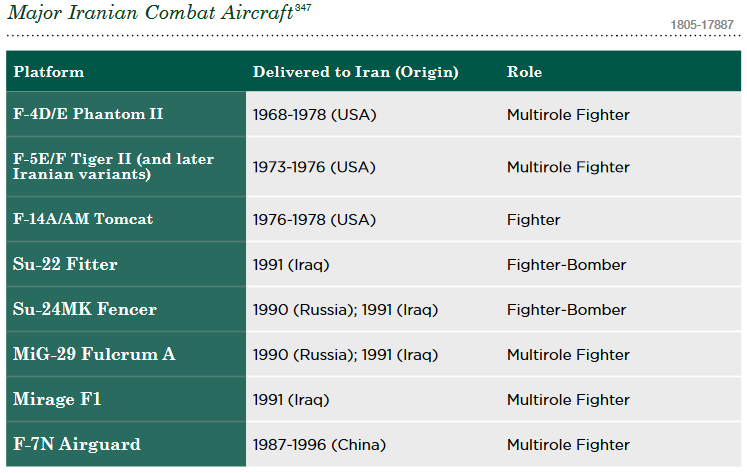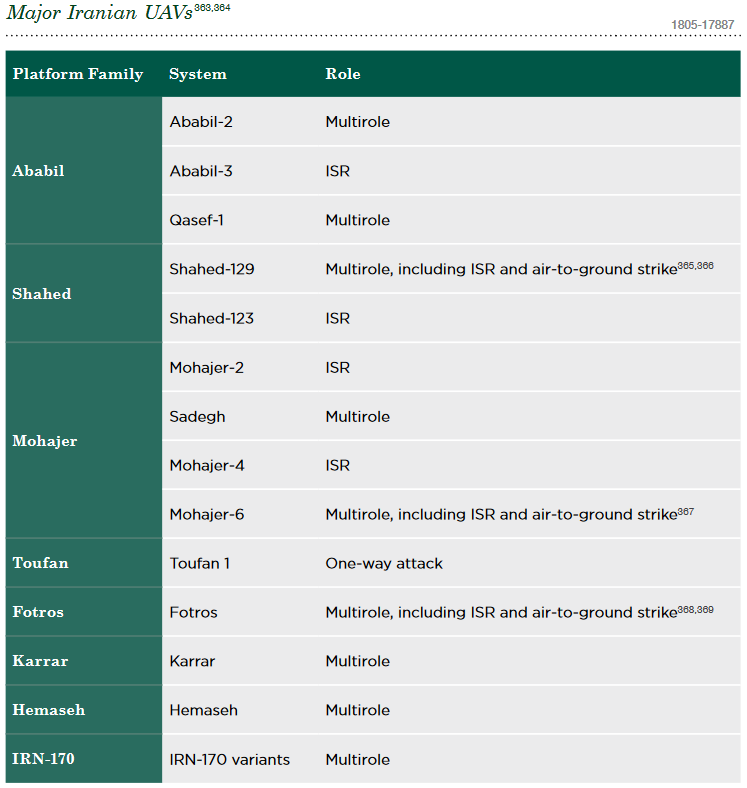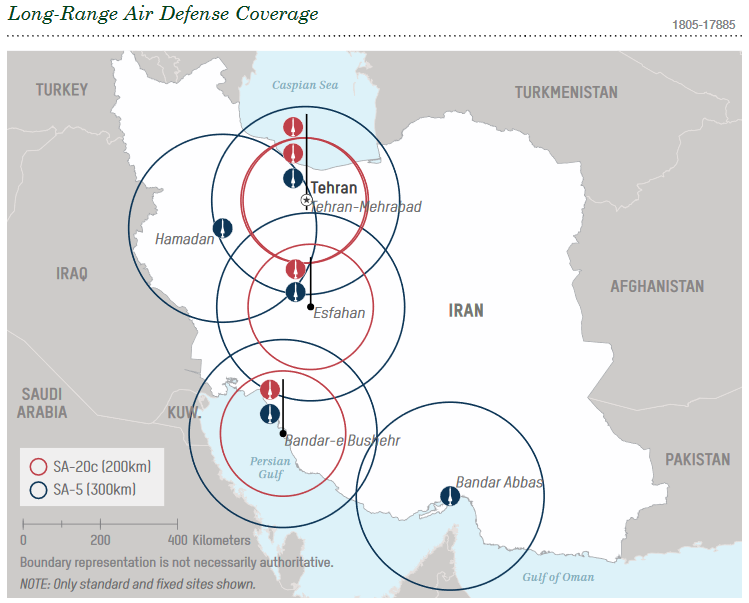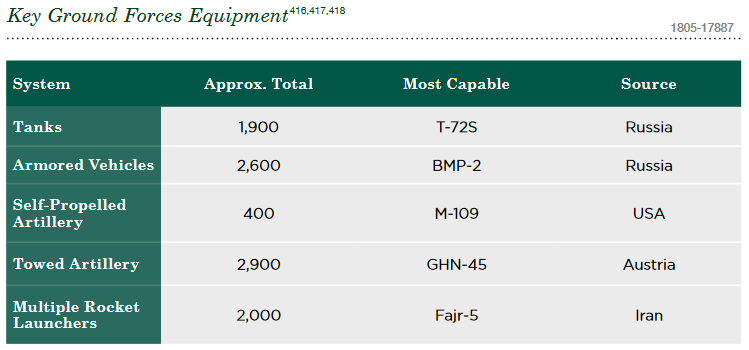On November 19th, the US Defense Intelligence Agency published the 2019 “Iran Military Power” report, entirely focused on Iran’s defensive and offensive capabilities.
The report in its entirety can be found here: [pdf]
There’s also a trailer to fluff up the report.
It begins by introduced the facts: throughout it’s 40-year history, the Islamic Republic of Iran has been principally opposed to the United States, specifically its presence in the Middle East and its support of Israel.
“While attempting to strengthen its deterrence against foreign attack and influence, Tehran has committed itself to becoming the dominant power in the turbulent and strategic Middle East. Its ambitions and identity as a largely Persian Shia power in a region composed of primarily Arab Sunni states often put it at odds with its neighbors, most of which look to the United States and the West to guarantee their security.”
The report furthermore admits that Iran has substantially improved its military capabilities in the past decades, and that it heavily relies on unconventional warfare elements and asymmetric capabilities—intended to exploit the perceived weaknesses of a superior adversary—to provide deterrence and project power. This combination of lethal conventional capabilities and proxy forces poses a persistent threat.
The Islamic Republic has a hybrid approach to warfare using both conventional and unconventional elements.
On the conventional side, Iran’s military strategy is primarily based on deterrence and the ability to retaliate against an attacker.
Tehran’s unconventional warfare operations and a network of militant partners and proxies enable it to advance its interests in the region, as well as attain strategic depth.
The Iranian military, as per the report relies heavily on three core capabilities:
- Ballistic missiles;
“Iran’s ballistic missiles constitute a primary component of its strategic deterrent. Lacking a modern air force, Iran has embraced ballistic missiles as a long-range strike capability to dissuade its adversaries from attacking Iran. Iran also has the largest missile force in the Middle East, with substantial inventory of close-range ballistic missiles, short-range ballistic missiles and medium-range ballistic missiles that can strike targets throughout the region as far as 2,000 kilometers away. Iran will deploy an increasing number of more accurate and lethal theater ballistic missiles, improve its existing missile inventory and also field new land attack cruise missiles. Iran’s developments of its space launch vehicle program could also serve as the test bed for the development of intercontinental ballistic missile technologies.”
- Naval forces capable of threatening navigation in the Persian Gulf and the Strait of Hormuz;
“Iran’s naval capabilities emphasize an anti-access area denial strategy. Benefiting from Iran’s geostrategic position along the Persian Gulf and the Strait of Hormuz, Iran’s layered maritime capabilities emphasize asymmetric tactics using numerous platforms and weapons intended to overwhelm an adversary’s naval force. The full range of these capabilities includes ship- and shore-launched anti-ship cruise missiles, small boats, naval mines, submarines, unmanned aerial vehicles, anti-ship ballistic missiles and air defenses.”
- Unconventional capabilities, including the use of partners and proxies abroad.
“Iran’s use of partners, proxies and unconventional warfare is central to its regional influence and deterrent strategy. The IRGC Qods Force, Iran’s primary tool for unconventional operations, maintains a wide network of non-state partners, proxies and affiliates throughout the region. Iran provides a range of financial, political, training and material support to groups which would include Hezbollah, Iraqi Shia militant groups, the Houthis in Yemen, some Palestinian groups, the Taliban and Bahraini Shia militants.”
According to the report Iran’s National Defense Strategy focuses on four aspects:
- Ensure Continuity of Clerical Rule
“The supreme leader’s position is based on the popular acceptance of velayat-e faqih. To ensure the regime’s continued legitimacy with the Iranian populace, Tehran attempts to control much of the domestic political, social, and cultural environment and promote its interpretation of Islamic ideology.”
- Secure the Nation From Internal and External Threats
“The regime uses its military and security capabilities to counter internal threats from political and ethnic opposition movements and terrorist groups and to prevent neighboring states’ instability from spilling over or causing violence in Iran. The military defends Iranian territory from foreign adversaries—including perceived existential threats, such as the United States, and regional rivals, such as Israel and Saudi Arabia—and provides support to allies and partners to counter regional threats.”
- Become a Dominant Regional Power
“Tehran aspires to lead a stable regional order in which it has dominant influence. In Iran’s vision for the region, its allies remain intact, the influence of the United States and U.S. regional partners is degraded, and Sunni extremist groups are defeated. In pursuit of these goals, Iran provides extensive military, advisory, and financial assistance to allies and partners, seeking to protect its regional interests and pressure adversaries.”
- Attain Economic Prosperity
“Domestically, President Hassan Fereidun Ruhani’s priority is to achieve national economic prosperity by reducing subsidies to the populace, curbing corruption, reforming the financial sector, and attracting foreign investment. Tehran aims to balance foreign investment and partnerships with the priority it places on economic self-sufficiency, in part to reduce the effects of U.S. and multilateral sanctions.”
Mentioned is also the so-called “Axis of Resistance”:
“Iran uses the term “Axis of Resistance” to describe its loose confederation of like-minded state and nonstate actors across the Middle East to counter Western influence. These partners, proxies, and allies include the Assad regime in Syria, Hizballah in Lebanon, Shia militias in Iraq, the Huthis in Yemen, Bahraini militants, and some Palestinian groups. Most of these are Shia entities, but select Sunni groups—like HAMAS—also align with Iran on key issues. The axis helps Tehran extend its influence in the region and provides a degree of strategic depth for Iran.”
In terms of numbers and structure, the Iranian military is comprised of two separate branches: the Islamic Revolutionary Guard Corps and its Regular Military Forces (Artesh).
The number estimates are presented in the table below and are quite numerable, with a total of approximately 1 million servicemen, including reserve personnel.
Iran’s defense budget has seen a steady increase between 2014 and 2018, after the implementation of the Joint Comprehensive Plan of Action (JCPOA, the Iran Nuclear Deal). However, after the US withdrawal from the deal and the reintroduction of sanctions, Iran’s budget for 2019 was reduced.
In 2018 it was $27.3 billion, adjusted for inflation, which is roughly 3% of GDP, while in 2019 the projected budget stays at $20.7 billion.
The spending is separated into several main directions: the IRGC, Artesh, and Law Enforcement Force (LEF), as well as the Armed Forces General Staff (AFGS), the Ministry of Defense and Armed Forces Logistics (MODAFL), and security forces pensions.
In terms of doctrine and strategy, as per the report, Tehran employs a complex set of military and security capabilities, including a combination of conventional and unconventional forces. Iran’s conventional military strategy is primarily based on deterrence and the ability to retaliate against an attacker. Its unconventional warfare operations and network of militant partners and proxies enable Tehran to advance its interests in the region and attain strategic depth from its adversaries. If deterrence fails, Iran would seek to demonstrate strength and resolve, impose a high cost on its adversary, and reestablish deterrence using the full range of these capabilities.
Iran has a complicated chain of command, which can be followed in the flow chart. C2 stands for operational command and control, thus not every body or official in the chain of command has the authority to give effective commands.
The key military leaders as per the report are as follows:
In terms of military capabilities, as mentioned above, Iran lacks a conventional air force, but it is set on modernizing it. Currently, its ballistic missiles, and navy (and specifically the IRGC Navy) are its principal tools of defense.
The modernization goals, according to the report are as follows:
Specifically looking into the different military capabilities, the situation is the following:
- Ballistic Missiles:
Iran has the largest and most diverse ballistic missile arsenal in the Middle East, with a substantial inventory of close-range ballistic missiles (CRBMs), short-range ballistic missiles (SRBMs), and medium-range ballistic missiles (MRBMs) that can strike targets throughout the region up to 2,000 kilometers from Iran’s borders, as far as Israel and southeastern Europe. Iran’s missile force—the Al-Ghadir Missile Command (AGMC), which falls under the control of the IRGC Aerospace Force (IRG-CASF)—serves as a critical strategic deterrent and a key tool of Iranian power projection.
In terms of range according to the missile type, a general idea of the range can be seen below:
- Navy:
Iran operates two naval forces – the Islamic Republic of Iran Navy (IRIN) and the IRGC Navy (IRGCN). IRIN has existed since 1979, the IRGCN was established in 1985. The commander of the IRIN is Rear Admiral Hossein Khanzadi, and the commander of the IRGCN is Rear Admiral Alireza Tangsiri.
In 2007, the two naval forces reorganized, and Iran assigned specific areas of operation for each. Tehran assigned the IRGCN sole responsibility for the Persian Gulf and assigned the IRIN the Gulf of Oman and Caspian Sea. Both services continued to share responsibility for the Strait of Hormuz. The geographic split helped stream-line command and control (C2) while reducing confusion, miscommunication, and duplication of efforts. With the added responsibility, the IRGCN established two new naval districts (NDs) in the central and southern Persian Gulf. The reorganization also provided the IRIN with a greater mandate to operate farther from the Iranian coast.
The IRIN is more a strategic force, with responsibility over 4 naval districts: Bandar Abbas in the Strait of Hormuz, Bushehr in the Persian Gulf, Chah Bahar in the Gulf of Oman and Bandar Anzali in the Caspian Sea.
Its current capabilities are rather outdated, and there are reports of new destroyers and other large warships being in development and construction, but only time can tell. Currently, the IRIN is objectively subpar when compared to the US Navy capability.
Following are the numbers of equipment in the IRIN, as per the report:
The IRGCN, which comprises approximately 20,000 personnel, is tasked with protecting primarily the Iranian littoral. It employs an asymmetric doctrine that emphasizes speed, mobility, large numbers, surprise, and survivability and takes advantage of Iran’s geography with the shallow and confined waterways of the Persian Gulf and Strait of Hormuz.
It comprises of smaller boats, specifically aimed at countering large warships such as a US aircraft carrier by overwhelming it.
The types and estimated numbers of its equipment are as follows:
The range of the Iranian coastal defense cruise missiles are operated by both IRIN and IRGCN and their range is as follows:
- Iranian air force
Iran’s air and air defense capabilities are split primarily across three services: the Islamic Republic of Iran Air Force (IRIAF) and the Islamic Republic of Iran Air Defense Force (IRIADF), both under the Artesh, and the IRGCASF. Iran’s air capability is rather aged and is in urgent need of modernization. It’s air defense capability has undergone some modernization in recent months and years, specifically by introducing new missile defense systems, such as the Russian S-300, as well as indigenously developed systems.
The Islamic Republic has 12 fighter bases throughout the country, with various US-made, Russian-made and even European-made fighter jets.
The main combat aircraft that the Iranian air forces operate are the following:
The IRGC Aerospace Forces notably operates quite a few UAVs, which are also Iran’s primary air capability that is rapidly advancing.
Iran lacks a wide all-encompassing air defense posture, rather it specifically focuses on more important locations throughout the country. This isn’t to say that there aren’t short-range defense systems present at other locations, the map simply shows the long-range capability.
- Ground Forces
Iran maintains two independent ground forces: the Islamic Republic of Iran Ground Force (IRIGF) under the Artesh and the IRGC Ground Force (IRGCGF) under the IRGC. Despite deploying some ground forces to Iraq and Syria in recent years, their mission continues to focus primarily on Iran’s territorial defense and internal security.
The IRIGF maintains approximately 350,000 soldiers and serves as Iran’s first line of defense against an invading force. The IRIGF consists of about 50 combat arms brigades, many of which are light infantry units with a sizable contingent of armored and mechanized infantry units.
The IRGCGF is the largest component of the IRGC, consisting of approximately 150,000 personnel. In addition to its conventional military role of protecting Iranian territory against external threats, the IRGCGF along with the IRGC’s paramilitary reserve component, the Basij, also have responsibilities to counter internal threats.
Some of the key equipment that the ground forces operate is the following:
- Special Operations Forces
The Artesh and IRGC both maintain ground-based special operations forces (SOF) and maritime special operations forces (MAR-SOF) of varying levels of capability.
Within the Artesh, IRIGF SOF include commando, airborne, and special forces brigades, and the IRIN operates a Special Boat Service (SBS) unit. Within the IRGC, IRGCGF SOF include commando and special forces brigades in addition to an elite special unit; the IRGCN also operates a MARSOF unit.
In terms of future modernization, current modernization programs are as follows:
- Through 2021, Iran has prioritized the development and production of missile, naval, air defense, UAV, and EW systems, based on priorities published in its sixth 5-year development plan (2017–2021);
- Iran domestically develops and produces liquid- and solid-propellant CRBMs, SRBMs, and MRBMs and continues to improve the range, lethality, and accuracy of its missile systems;
- Tehran’s naval modernization efforts focus on providing the IRIN and IRGCN with increasingly lethal platforms and weapons—including advanced mines and torpedoes, small submarines, fast attack craft, and ship- and shore-based ASCMs—that further complicate freedom of navigation throughout Iran’s littoral;
- Iran can develop and produce SAM systems and radars, including those reverse-engineered from its legacy U.S. and Russian equipment. Iran continues to improve its integrated air defense system (IADS), which is concentrated around Tehran and the nuclear sites, with new air surveillance radars, SAMs, and C4ISR systems.
- Currently, it is unclear if Iran can develop its own combat aircraft, but it has shown prowess in upgrading and maintaining its aging US-made and Russian-made warplanes. At the same time, Iran’s UAV capability has seen rapid improvement and it is unlikely that it will stop.
- Modernization in the ground forces receives less focus in recent years and it is unlikely to focus on developing its own main battle tank models.
The DIA report provides a largely accurate and unbiased look at the Iranian military capability, by using varied sources and unlike many of the US government-funded think tank reports, it does appear to adequately present the information, without obvious attempts to skew it.
MORE ON THE TOPIC:





